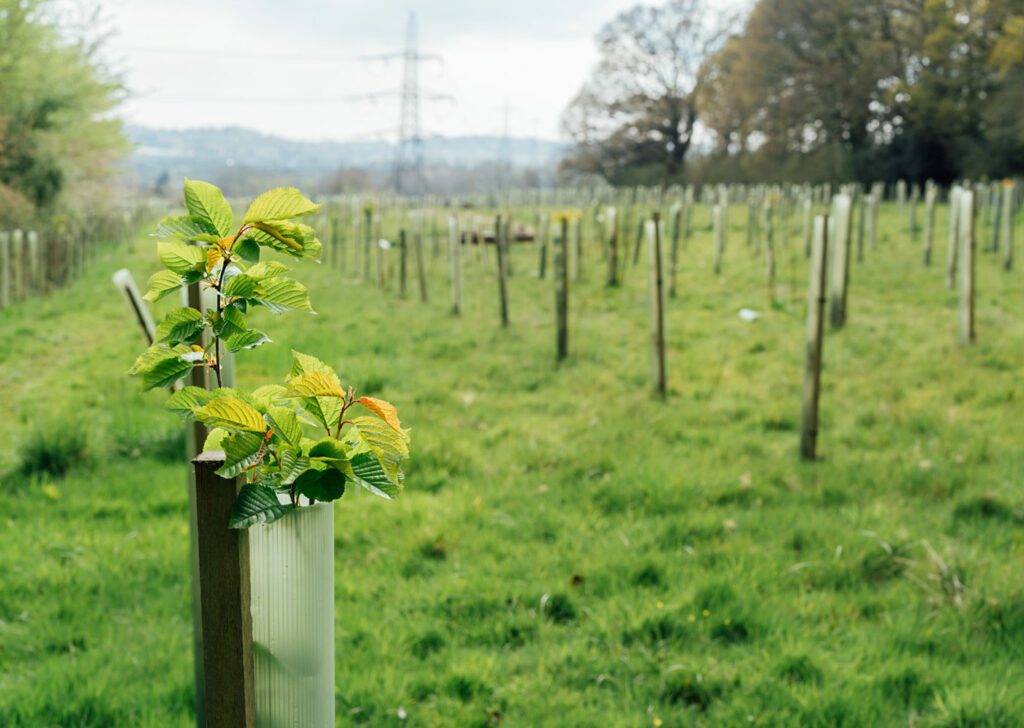As the market for environmental service payments rapidly expands some landlords have seen a potential opportunity to recover possession of land from tenancies protected by the Agricultural Holdings Act 1986 (“the 1986 Act.”)
Many landlords are considering the opportunities that biodiversity net gain (“BNG”) and nutrient neutrality represent, to say nothing of the existing carbon markets. All of these markets involve changes to the use and appearance of land whether that is habitat creation, cessation of farming or the management of woodland. The planting of trees from small copses to large scale afforestation can form part of these plans.
Definition of agriculture
It is therefore worth considering how the 1986 Act deals with the issue of tree planting. The question of purpose is the first consideration as the definition of agriculture states:
““agriculture” includes horticulture, fruit growing, seed growing, dairy farming and livestock breeding and keeping, the use of land as grazing land, meadow land, osier land, market gardens and nursery grounds, and the use of land for woodlands where that use is ancillary to the farming of land for other agricultural purposes, and “agricultural” shall be construed accordingly.”
So where new woodland planting is planned for a use which is not ancillary to agricultural use that will result in a change of use of the land. It is suggested that the definition of agriculture was designed to deal with the planting of shelterbelts etc which are ancillary to the primary agricultural use of the land.
Agricultural or non-agricultural use?
The planting of trees for habitat creation purposes would, in my view, be a non-agricultural use and indeed in a nutrient neutrality context would have to be in order to demonstrate the required cessation of agricultural activity. It is possible that agricultural use could continue on lightly afforested land used for habitat creation, perhaps through extensive conservation grazing. In those circumstances there is arguably no change of use and the agricultural label remains firmly affixed. This could be important to the landlord as well as the tenant, as it could assist with the securing of agricultural property relief for inheritance tax purposes.
Whether or not a change of use has occurred is important because of the operation of the 1986 Act.
Planning permission
Although the planting of trees can effect a major change in the landscape, such an operation does not, of itself, require planning permission, although an Environmental Impact Assessment may be required from the Forestry Commission. This is despite the fact that there would be a change of use from agriculture to woodland.
Section 55 Town and Country Planning Act 1990 (“TCPA90”) defines “development” and development requires planning permission. It also identifies what is not development, and includes the following:
“(2) The following operations or uses of land shall not be taken for the purposes of this Act to involve development of the land—
[…]
(e) the use of any land for the purposes of agriculture or forestry (including afforestation) and the use for any of those purposes of any building occupied together with land so used”
The TCPA90 does not include a definition of “forestry” or “afforestation”, but the Forestry Commission guidance on “Environmental Impact Assessments for woodland” (dated 28 September 2021) (“the Guidance”) states:
“Afforestation means conversion of a non-woodland land use, for example agriculture, into woodland or forest (these terms are used interchangeably) by means of planting, or facilitating natural regeneration (self-sowing) of trees to form woodland cover. This can include proposals for short rotation coppice (SRC) and short rotation forestry (SRF), including energy crops and Christmas tree plantations.”
Case B of the 1986 Act
If planning consent is not required, then a landlord will not be able to rely on the provisions of Case B of Schedule 3 of the 1986 Act. It must be remembered that there may be other aspects of a particular project which effect a change of use of the land or require development which may require planning permission.
Where perhaps Case B will come into consideration is where developers re-organise their projects to try and put landlords in a more favourable tactical position. If we consider the example of a redline development area of say 10 acres. Plans may be in existence to cover this with houses but the advent of the Environment Act 2021 (“EA 2021”) and the need for BNG necessitates a change. Now the developer may require a redline area of 20 acres to accommodate the original number of dwellings plus the land required for onsite BNG mitigation.
SUDS
A further point here is the recent decision by the Government to implement Schedule 3 of the Flood and Water Management Act 2010, which makes Sustainable Drainage Systems (“SUDS”) compulsory for all new development. This places a further burden on developers, who will have to acquire bigger sites or build fewer or smaller houses.
This new 20 acre combined development and mitigation site could be the subject of a new planning application, which if granted could found a valid Case B notice to quit. That is a very different proposition to the original 10 acre application with an accompanying purchase of the necessary BNG credits or similar mitigation provided on a separate site some distance from the development.
I can’t see that the extension of the development site to accommodate SUDS or BNG mitigation would invalidate a Case B notice to quit. This is because the BNG mitigation or SUDS within a development redline boundary would clearly be of a non-agricultural nature and would require planning consent as part and parcel of the housing development.
Renegotiation
In light of these developments, we might expect to see renegotiation of existing option and promotion agreements between developers and landowners or tactical discussions prior to the service of a notice to quit. My advice has always been that those tasked with getting planning permission should link up with those in charge of securing vacant possession as early as possible. That advice is even more relevant in the current climate.
Natural capital and section 27
Coming back to natural capital schemes, if a change of use is being effected from agricultural to woodland use then section 27 (3) (f) of the 1986 Act comes into play. That states:
27 Tribunal’s consent to operation of notice to quit.
(1) Subject to subsection (2) below, the Tribunal shall consent under section 26 above to the operation of a notice to quit an agricultural holding or part of an agricultural holding if, but only if, they are satisfied as to one or more of the matters mentioned in subsection (3) below, being a matter or matters specified by the landlord in his application for their consent.
(2) Even if they are satisfied as mentioned in subsection (1) above, the Tribunal shall withhold consent under section 26 above to the operation of the notice to quit if in all the circumstances it appears to them that a fair and reasonable landlord would not insist on possession.
(3) The matters referred to in subsection (1) above are—
(a) – (e)……
(f) that the landlord proposes to terminate the tenancy for the purpose of the land’s being used for a use, other than for agriculture, not falling within Case B.
Availing themselves of section 27 (3) (f) a landlord could therefore serve a notice to quit in circumstances where tree planting is proposed. However, there is an important safety net for the tenant; the Tribunal will not give consent to the operation of the notice to quit if they consider that a fair and reasonable landlord would not insist on possession.
Fair and reasonable landlord
On the face of it, it could be argued that a desire to tackle climate change through afforestation is a laudable aim and that a fair and reasonable landlord would insist on possession. However, I am not sure that the average Tribunal would see things through such a macro lens.
The test is meant to be that of the hypothetical landlord and so objective in nature, but the Tribunal is human and inevitably, subjective views will be brought to bear. Every Tribunal will be different and one person’s view of what is reasonable and the importance or otherwise of climate change etc may radically differ from another’s.
Scale & context
Much may depend on scale and whilst consent might be given for possession of part of a holding, the economic and personal impact of losing a whole tenancy may well tip the scales in the tenant’s favour – even in the face of the global emergency of climate change.
Similarly, context will play a part and if a landlord has a well worked up landscape scale recovery plan on the stocks, with one dissenting tenant blocking progress for the wider river catchment community, then that might swing the decision back into the landlord’s camp.
Every case will be different and although we are working in a rapidly changing environment some things remain the same; that fundamental weighing up of the benefit to the landlord, as compared to the detriment suffered by the tenant, will still have to be performed by the Tribunal. Context is everything and early and sound professional advice will be essential.

